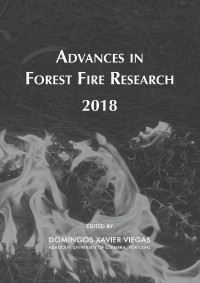Please use this identifier to cite or link to this item:
https://hdl.handle.net/10316.2/44545| DC Field | Value | Language |
|---|---|---|
| dc.contributor.author | Jiménez, Enrique | |
| dc.contributor.author | Fernández-Alonso, José M. | |
| dc.contributor.author | Fernández, Cristina | |
| dc.contributor.author | Fontúrbel, Teresa | |
| dc.contributor.author | Vega, José A. | |
| dc.date.accessioned | 2018-11-09T12:16:37Z | |
| dc.date.accessioned | 2020-09-06T17:31:19Z | - |
| dc.date.available | 2018-11-09T12:16:37Z | |
| dc.date.available | 2020-09-06T17:31:19Z | - |
| dc.date.issued | 2018 | - |
| dc.identifier.isbn | 978-989-26-16-506 (PDF) | |
| dc.identifier.uri | https://hdl.handle.net/10316.2/44545 | - |
| dc.description.abstract | In the current framework of forest fires incidence, climate change and forest management budget constraints, fuel treatment activities should be located in strategically areas to meet a set of prevention, economic and ecological criteria. Characterizing potential forest fire behavior is critical to develop effective fuel treatment plans in order to reduce the negative impacts of wildfires. This study was carried out in the District XIX Caldás – Salnés (Pontevedra, Spain) with 132004 ha, an area with high occurrence of wildfires. Fire behavior characteristics at landscape level were obtained with Flammap fire modeling software using as inputs spatially explicit data. This software requires as inputs weather, terrain, stand and fuel characteristics. Simulations were carried out under extreme fire weather conditions. Fuel layers used for the simulations were obtained combining the Spanish National Forest Map (4th Spanish National Forest Inventory) and a new fuel classification developed for forest fuels in Galicia. The software WindNinja was employed to include in the simulations the spatial variability of wind speed and direction as a consequence of topography. After computing output data from fire behavior simulation, Landscape Treatment Designer (LTD) was the software employed to obtain the optimal treatment locations. LTD creates a sequence of spatially defined project areas that maximizes the objectives with the provided constraints and treatment thresholds. Flame length was selected as treatment threshold variable. Priority stands for treatment were defined as a function of a set of preventive, ecological and economic parameters (presence of human infrastructures, fire risk according to fire frequency and ecological value, fuel model and stand structure). The maximum area to treat was constraint to 3000 ha for the whole scenario. After obtaining flame length for each stand with Flammap, LTD creates both aggregated and dispersed treatment schedules, each representing a different spatial treatment scenario, taking into account the priority functions. The results highlight the potential of this methodology as a very useful tool for fuel treatments at landscape level, taking into account that the effective allocation of resources is critical. | eng |
| dc.language.iso | eng | - |
| dc.publisher | Imprensa da Universidade de Coimbra | por |
| dc.relation.ispartof | http://hdl.handle.net/10316.2/44517 | por |
| dc.rights | open access | - |
| dc.subject | FlammMap | eng |
| dc.subject | Lanscape Treatment Designer | eng |
| dc.subject | fuel treatments | eng |
| dc.title | Optimisation of fuel treatments at landscape level in NW Spain | por |
| dc.type | bookPart | por |
| uc.publication.firstPage | 262 | - |
| uc.publication.lastPage | 269 | - |
| uc.publication.location | Coimbra | por |
| dc.identifier.doi | 10.14195/978-989-26-16-506_28 | - |
| uc.publication.section | Chapter 2 - Fuel Management | por |
| uc.publication.digCollection | PB | por |
| uc.publication.orderno | 28 | - |
| uc.publication.area | Ciências da Engenharia e Tecnologias | por |
| uc.publication.bookTitle | Advances in forest fire research 2018 | - |
| uc.publication.manifest | https://dl.uc.pt/json/iiif/10316.2/44545/204047/manifest?manifest=/json/iiif/10316.2/44545/204047/manifest | - |
| uc.publication.thumbnail | https://dl.uc.pt/retrieve/11057296 | - |
| uc.publication.parentItemId | 55072 | - |
| uc.itemId | 68806 | - |
| item.grantfulltext | open | - |
| item.fulltext | With Fulltext | - |
| Appears in Collections: | Advances in forest fire research 2018 | |
Files in This Item:
| File | Description | Size | Format | |
|---|---|---|---|---|
| optimisation_of_fuel_treatments.pdf | 777.5 kB | Adobe PDF |  |
Items in DSpace are protected by copyright, with all rights reserved, unless otherwise indicated.
